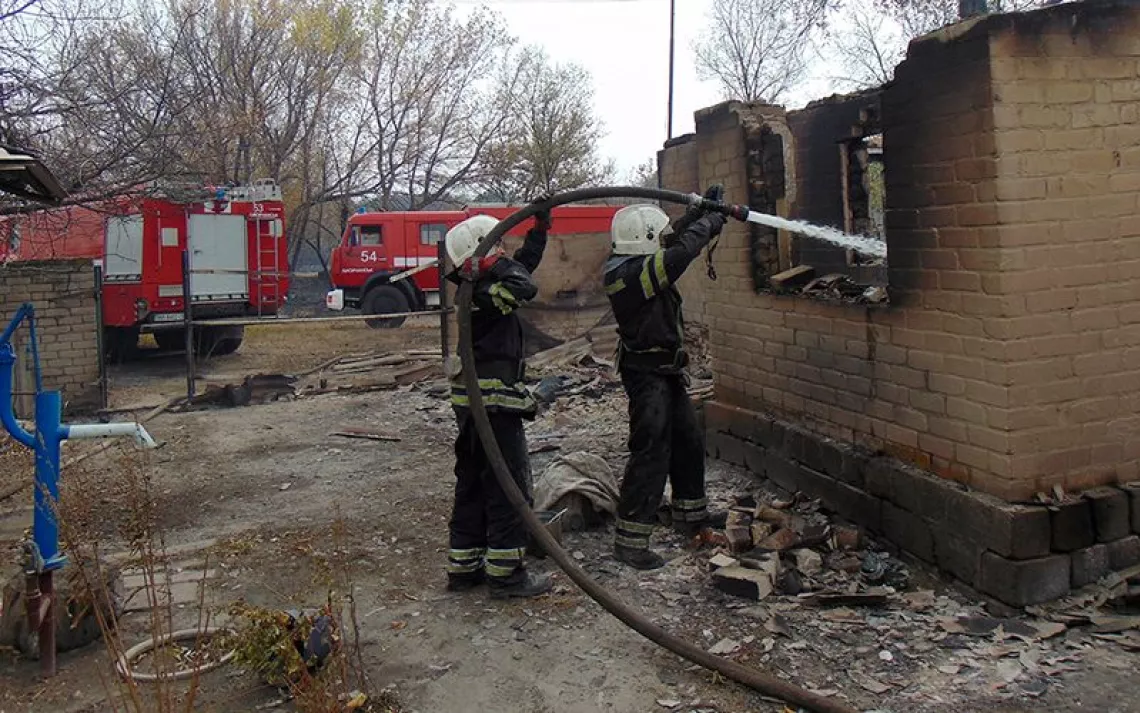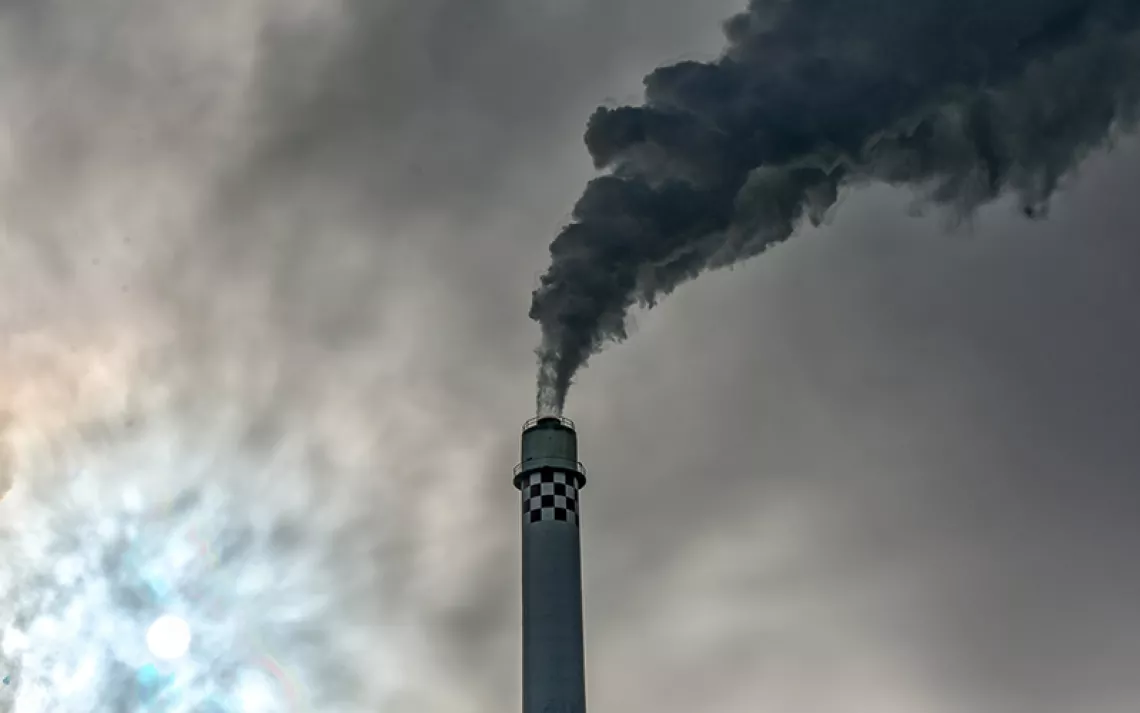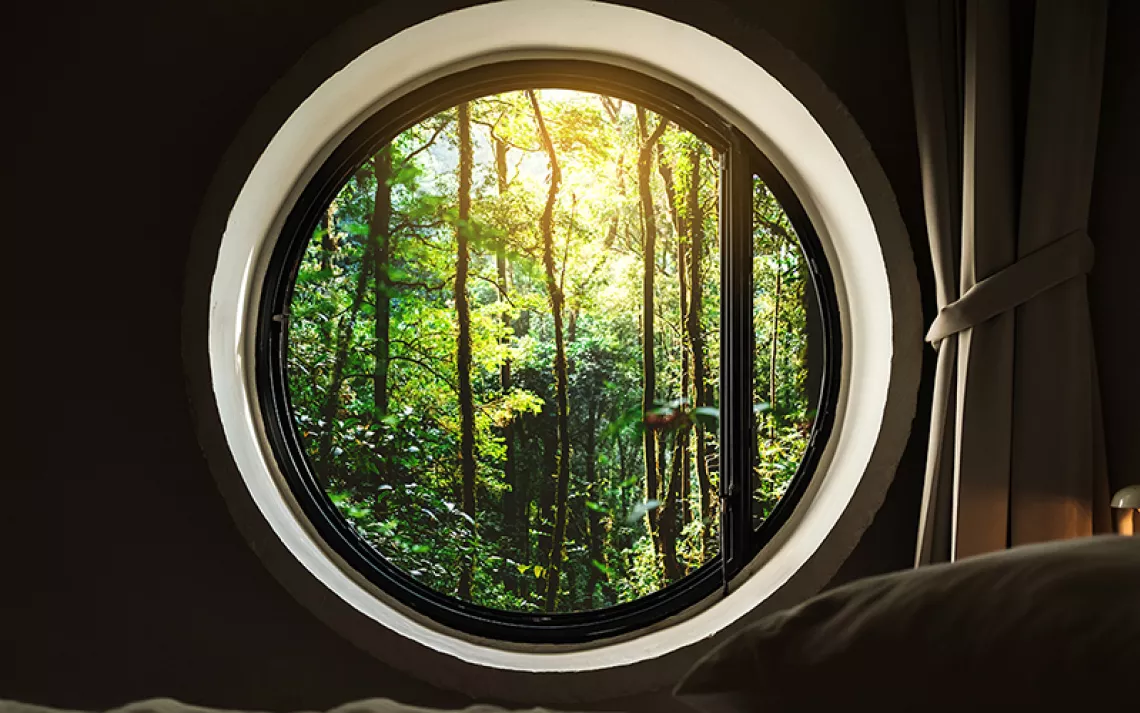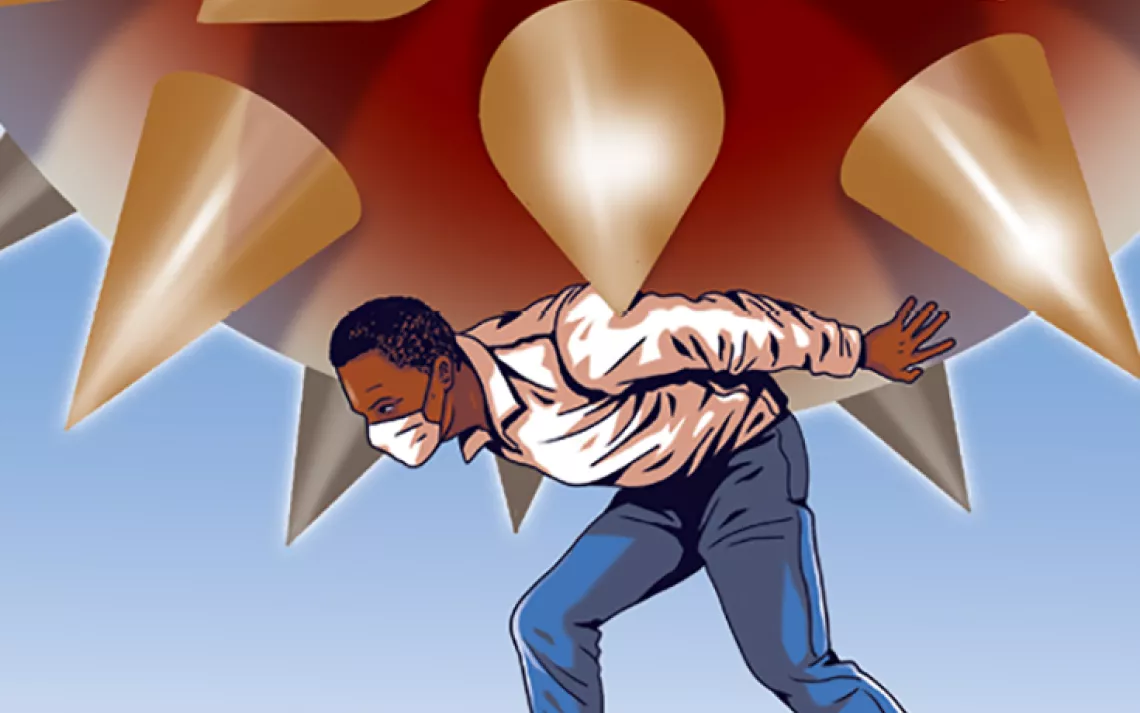The Dream of Rewilding
Notes on hope—false and real—during the pandemic
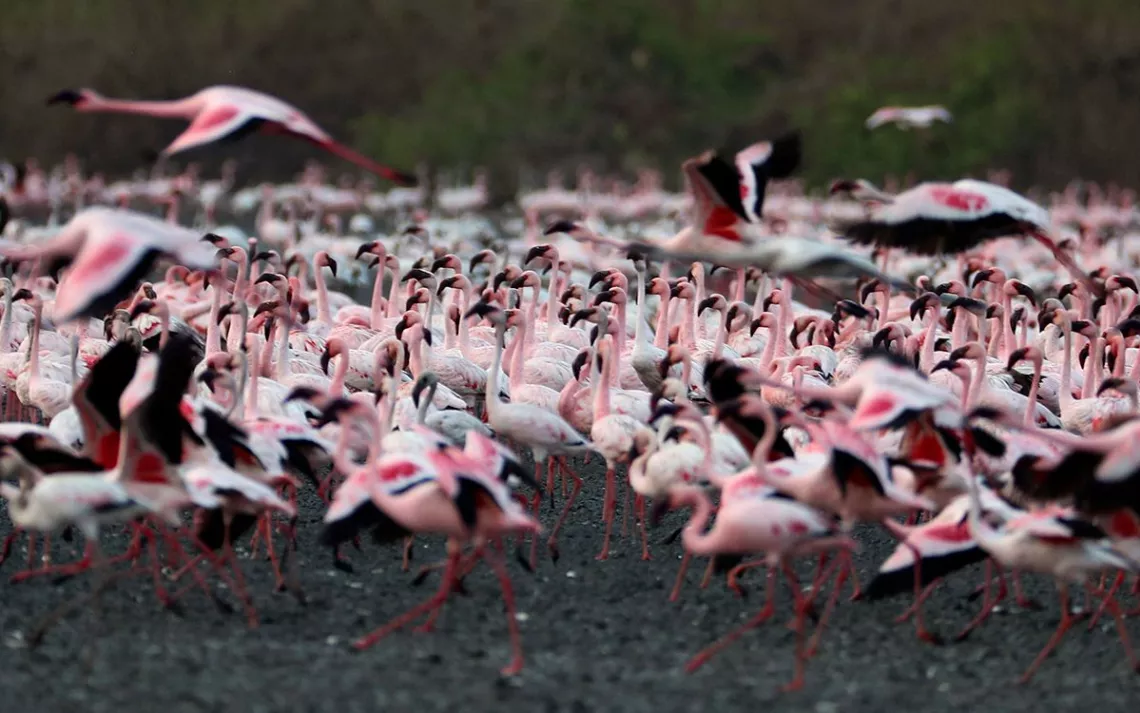
They have flown and prowled and crept and crawled onto our social media pages. No doubt you have seen some of them. The trio of mountain lions strolling through a snowy neighborhood in Boulder, Colorado. A pack of wild boars racing through a beach town not far from Barcelona. The black bears and bobcats in Yosemite Valley having the run of the place with a couple of million fewer tourists around. Animals all over have been returning to suddenly open habitat—"Where’d all the humans go?" they might wonder—like the 150,000 flamingos turning ponds pink in Mumbai or the sonically unimpaired whales swimming in what were shipping lanes just months ago. Some of the stories are a little silly—goats loose on the streets of San Jose!—and of course, since we inhabit an era of disinformation and online hoaxes, some of the wildlife comebacks have turned out to be fake news. The supposedly wasted elephants passed out in a tea garden in Yunnan, China, after getting drunk on corn wine and the dolphins swimming in the canals of Venice never really happened (sorry folks, the water is cleaner, but there are still no dolphins). But most of these stories are real. According to a marine biologist I know, scientists in Hawaii reported that with the withdrawal of tourists, actual dolphins and black-tip sharks, as well as bonefish, chubs, goatfish, and surgeonfish, have come closer to shore, while monk seals and sea turtles hauled out on unpeopled beaches.
Meanwhile, what is happening with the air is there for all to see. Villages in the Indian state of Punjab now have a clear view of Mount Everest, and the air in the province of Delhi was described as “alpine.” On May 13, The New York Times reported that for the first time, it looks like the United States will produce more of its total electricity for the year from renewables than from coal. Meanwhile, the carless streets of April and May looked like something out of [name your favorite post-apocalyptic movie].
Perhaps when you read this almanac of resilience, you have a reaction similar to mine. Maybe you start to feel a little—what is that unfamiliar word?—hopeful. Not quite giddy but, still, a little less ready to curl into a mental fetal position and stay there for a long, long time. Could it be possible, you might even dare to think, that we are not completely screwed by climate change and mass extinction? Maybe those old clichés about nature’s resilience are not just true but newly relevant—instructive, even. Maybe if we just took a two-month time-out each year, our children’s future wouldn’t have to be so bleak. Maybe…
Not so fast, friends. Doom has not left us, just taken a brief vacation. Already cars are clogging the streets again, and that’s the least of it. In May, buoyed by this new and unfamiliar sense of hope, I wrote to a number of scientists and environmentalists and posed this question: "Has our couple of months of reduced travel and resource use really made a difference for the earth, the animals, and the climate?"
Don’t get too excited, most of the scientists responded. They reminded me that our second month of sheltering, during which humans were making like hibernating grizzlies, was tied for the hottest April on record. Carbon is cumulative, and what has been building up over the past 50 years isn’t going away any time soon, and by soon I mean decades. In fact, global concentrations of carbon dioxide just hit an all-time high. Despite the reduction of plane and car travel, we are only projected to have reduced our greenhouse gas emissions by 5 to 8 percent compared with last year, which, while a positive, is still modest. Last November, the United Nations Environment Program released a report that said we need to cut emissions by 7.6 percent every year for a decade to meet the very modest goal of the Paris Agreement, which was to limit the temp rise to 1.5C.
“One positive is that it does give us a magic experiment, a black-magic experiment maybe, a way to look at what really happens when we stop flying around and driving around everywhere,” Stuart Pimm, the Doris Duke professor of conservation ecology at Duke University, told me. “It will give us a sense of how many people living now would have died because of respiratory disease for instance.”
On that last point, there’s already some good news: A new study of the early stages of the pandemic concludes that the 25 percent reduction of air pollution in China saved more lives in that country during the early stages of the pandemic than the virus took. Beyond localized benefits like that, Pimm suggested that the pandemic could give us a realistic price tag on truly fighting climate change, though he had no false hopes that this would be acted on in the present political climate.
David Inouye, a professor emeritus of biology at the University of Maryland, agreed that the unintentional global experiment of the pandemic offers a test case, of sorts, into how much people value environmental protections, including action on climate change. “If people decide they like these improvements, they may be more supportive of (or demand) efforts to continue these environmental benefits,” he told me.
Other scientists, however, struck more pessimistic notes.
“I’m sorry to report the outlook is still bleak,” responded Dylan McNamara, the chair of the Physics Department at the University of North Carolina Wilmington, whose research combines sustainability, chaos theory, and human-environmental systems. “Take planes for instance. The airlines that got money from the relief package had to promise minimums in numbers of flights, so even though passengers are down something like 98 percent, flights have only been cut by about 50 percent. And the IPCC has the entire world aviation industry contributing to about 3.5 percent of climate change. So a cut of a percent or two is where we stand with that 50 percent reduction—and that’s in the heat of the pandemic over the past few months. It will certainly go back up."
“I think the answer to your initial question is no,” McNamara continued. “I think that answer shines a big spotlight on how far gone we are. Yes, in cases like Delhi with smog, where the system responds on a very fast time scale, you can see differences. And yes, for other systems too that have a small spatial scale and fast time scale. But for the global climate system, we need a global change in the entire infrastructure of how we get energy. People driving less for a few months ain’t gonna cut it. We still depend on food that has huge carbon footprints. Nature wants to rebound in various ways, but the scope and scale of the rebound needed is enormous. The pandemic is showing us how fucked we really are. The ability of nature to respond is a question of scale—time and space.”
When I spoke to Caltech's Paul Wennberg, the R. Stanton Avery professor of atmospheric chemistry and environmental science and engineering, who studies the influence of human activity on the global atmosphere, he made the same distinction between local and global systems.
“It’s a little more complicated than the story people want to hear,” he said. “In the early days of sheltering in place, for instance, residents of L.A. had been exclaiming about how clear the air was, but what people had not noted was that this had followed several days of rain. That would have cleared the air anyway, and there was disappointment when things quickly returned to normal. Yes, there are fewer cars on the roads, but one thing we are learning is that cars aren’t the biggest problem. Diesel trucks, which stayed on the road, cause much more damage through NOx [nitrogen oxide] emissions.”
But there is a hopeful aspect to the fact that, as Wennberg put it, “the environment's response to this is still going to be pretty localized.” In less-developed places where the air is suddenly clear and people are seeing their surroundings and breathing freely as they never have before, the demand for clean air may outlast the pandemic.
Unless, of course, we simply return to business as usual. In that scenario, we will soon once again have the lousy air we had before.
*
I am wrestling with this idea of locally hopeful events and an overall assessment that remains grim. In many ways, what we are seeing during the pandemic is a distillation of the larger environmental picture. We may be buoyed by the local signs of rewilding but still stunned by the global situation. Maybe curling into that fetal position was the right move after all. At the same time, the wildlife comebacks and improved air and water quality are something more than just exciting. I’m pretty sure that, if we are willing to learn from them, they have something to teach us.
I don’t want to peddle something that isn’t true. (No, I would not give you false hope/On this strange and mournful day, Paul Simon sang.) I don’t want to fall prey to a tendency among my kind—nature writers, that is—to feel required to end every essay on an uptick despite darker realities. David Quammen, who laid out a prescient blueprint of the current pandemic in his book Spillover, makes it clear that what we are facing results from our inability to stop tearing up the world: "To put the matter in its starkest form: Human-caused ecological pressures and disruptions are bringing animal pathogens ever more into contact with human populations, while human technology and behavior are spreading those pathogens ever more widely and quickly." Quammen is not a flincher or a hope peddler, and one of my favorite nature essays is his “Planet of Weeds," which, rather than ending on a note of false hope, concludes that this world might ultimately belong to the tough, not the meek or the beautiful—to the rats, the gulls, the roaches, the weeds.
An honest toughness seems the order of the day. And yet, that being said, I reserve the right to be excited about watching those mountain lions stroll down those snowy Boulder streets. It is the best thing I have seen during this entire pandemic. When I first saw that video of the Boulder cougars, it was like something out of a dream. Dreams are not real, of course, but they can be helpful. They help us form visions of what might be. And what I saw was a dream of rewilding that gave me a wild jolt of joy.
I’ve always felt that joy and wildness, the things that first drew so many of us to nature, are underrated in our fight to preserve it. Even if the positive signs are merely local, they can still energize us for the larger fight. The environmental initiatives that have most intrigued me in recent years are the various rewilding projects like the Y2Y wilderness corridor from Yellowstone to the Yukon and the American Prairie Reserve’s efforts to return bison to the Great Plains. Particularly inspiring is the fight of the Yaak Valley Forest Council to save a remnant population of Montana grizzlies on land near the Canadian border. This is not a theoretical number of bears they are talking about saving, nor are they theoretical grizzlies. There are 25 bears left, maybe 24, and many members of the council regard the animals as their neighbors.
Such efforts are as much about giving animals room to roam as they are about addressing the climate crisis. Give the wildlife space, the argument goes, and they will take it. And that is what we have seen during the pandemic—nature filling niches, spilling into any space we give them. That is one of the secrets of those images: They all happen in a particular place. We don’t experience the natural world in the abstract. We experience it down by the marsh or in the copse of woods behind our house, and now, sometimes, in our streets. The hope we feel and the juice we get from that hope reminds us of the vitality of the wild, the massive importance of the natural world we are destroying.
There was a bear near my home on crowded Wrightsville Beach, North Carolina, the other day—a bear!—and while that bear did not bring with it the secret to beating climate change, it did bring something. Another hint of possible wildness maybe. On that same overcrowded beach there stands a single undeveloped plot of land on a block otherwise crammed with vacation homes. Less than an acre, it is hardly a nature preserve. But I like to go there to see the colony of green herons that have claimed it, despite their always-encroaching human neighbors.
The hope of rewilding has always been about possibility, and when we see animals returning and thriving, we are also seeing a potential way forward. We are reminded about what we are fighting for. We may not save the world—but we may help save that colony of green herons.
Maybe what we have seen during the pandemic are merely cute videos to be shared on social media. But I’d like to hope (that word again!) that they are more than that. They can be a way to envision our world as wilder, a world where other animals have their place while we step back. That is, a shared world. A world where we don't have to quash all other lives. Like most dreams, this may not be real and may never happen, but I'm glad to have glimpsed it and glad to have imagined a world where rewilding can happen.
*
I’ve done it again. Here I am returning to the ways of my nature writer tribe and ending, as I promised not to, on an uptick. Maybe what I’m after here really is something you might call hard hope. A hope that looks directly at Dylan McNamara’s conclusions and admits how screwed we really are. A hope that still celebrates the local victories and takes solace in the sheer wildness of the world, the implacable persistence of life determined to break through. Who, after all, could have predicted a few months ago that we’d have lions in the streets?
So perhaps what I’m asking of myself, and of you, is that we hold two opposite things in our minds at once. One is a grim picture of a weed-filled, overheated world that we can’t shy away from looking at if we’re to have any chance of preventing it. The other is a still-wild world, and therefore a joyful, varied, verdant world, where boars roam the streets and green herons roost and sea turtles haul out on the beaches and flamingos pink the ponds and grizzlies return to their historic ranges. That wild world—the whole wondrous nonhuman creation—is poised to resurrect itself, ready to come bursting back—if we only give it the chance and room and air to do so.
 The Magazine of The Sierra Club
The Magazine of The Sierra Club
